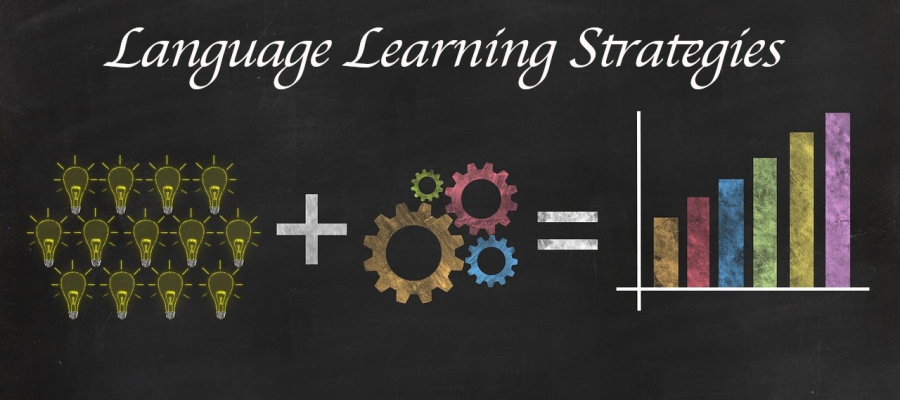In this ultimate guide to language learning strategies, we cover all the basics of language learning, including setting realistic goals and memorisation strategies.
It is an exciting and rewarding experience to learn a language. It opens up a whole new world of possibilities to make new friends and expand your career opportunities.
But if you haven’t done it before, the sheer amount of apps, books, resources and websites can be overwhelming, and not all of them are effective.
It can be very difficult to know which language learning strategies are going to help you learn languages fast.
The tips and tricks suggested in this guide are based on findings from research into learning a second language.
In particular we depend on:
- Stephen Krashen’s seminal work “Principles and Practice in Second Language Acquisition” (Krashen, S. (1982). Principles and practice in second language acquisition. Oxford, UK: Pergamon.),
- Lee, M., & Bong, M. (2019). Relevance of goal theories to language learning research, and
- Ullman, M. T., & Lovelett, J. T. (2018). Implications of the declarative/procedural model for improving second language learning: The role of memory enhancement techniques.
So whether you’re starting to learn a new language from scratch or brushing up on an old skill, this guide has everything you need to get started to learn languages!
Check out our latest posts about language learning strategies:
- Activate the Benefits of Daily Language Practice

- Breaking Through: Strategies to Surpass the Intermediate Language Learning Plateau

- How To Find the Motivation To Learn Languages: 18 Free Strategies

1. Getting Started Learning a Second Language
Language learning strategies fall into 3 broad categories: mental preparedness and attitudes, learning strategies, and memorisation strategies.
A. Mental Preparedness
When beginning your language learning journey, setting a goal for why you want to learn the language and what level of proficiency you want to achieve is crucial.
More importantly, it’s essential to find a balanced study plan that caters to both spoken and written language.
You need to find the right resources for YOU, whether language learning apps, textbooks, or online courses.
Consistency is key; creating a study routine and sticking to it religiously can help form a habit. Remember not to overburden yourself; instead, start small and steady – under promise and over-deliver.
A1. Mindset and Self-Belief
Self-belief is when you believe in your own ability to do something well. It’s having confidence in yourself to handle tasks and achieve your goals.

When you have high self-belief, you’re more likely to feel motivated, work hard, and do better at what you’re trying to accomplish.
On the flip side, if you have low self-belief, you might doubt your skills, put in less effort, or even avoid certain tasks because you don’t think you can do them effectively.
In language learning, having a growth mindset and strong self-belief are language learning strategies that can significantly boost your progress.
A growth mindset means believing that with effort and learning, you can develop your language skills.
This mindset encourages you to see challenges as opportunities for improvement rather than as obstacles.
When you maintain this perspective, you’ll stay motivated, even when faced with difficulties in language learning.
Alongside this mindset, having a strong belief in your ability to learn and grow in the language is crucial.
It will encourage you to tackle complex language tasks, seek out new learning opportunities, and ultimately, improve your language skills more effectively.
So, remember, nurturing a growth mindset and self-belief can be powerful tools to enhance your language learning journey.
A2. Self-Regulation and Persistance
In your language learning journey, keeping an eye on your progress, adjusting your strategies when needed, and sticking with the effort you put in can make a big difference.
Monitoring your progress means regularly checking how well you’re doing and what you need to work on.
When you notice areas that need improvement, you can adapt your learning methods to better suit your needs. It’s like fine-tuning your approach.
And perhaps most importantly, maintaining your effort means not giving up, even when you encounter challenges.
Language learning can be tough at times, but by staying persistent and putting in consistent effort, you’re more likely to achieve success.
So, remember to keep track of your progress, be flexible with your strategies, and keep that determination going – it’ll help you tremendously in your language learning journey.
A3. Embrace feedback
Getting feedback on your language learning efforts is like having a helpful guide along your journey.
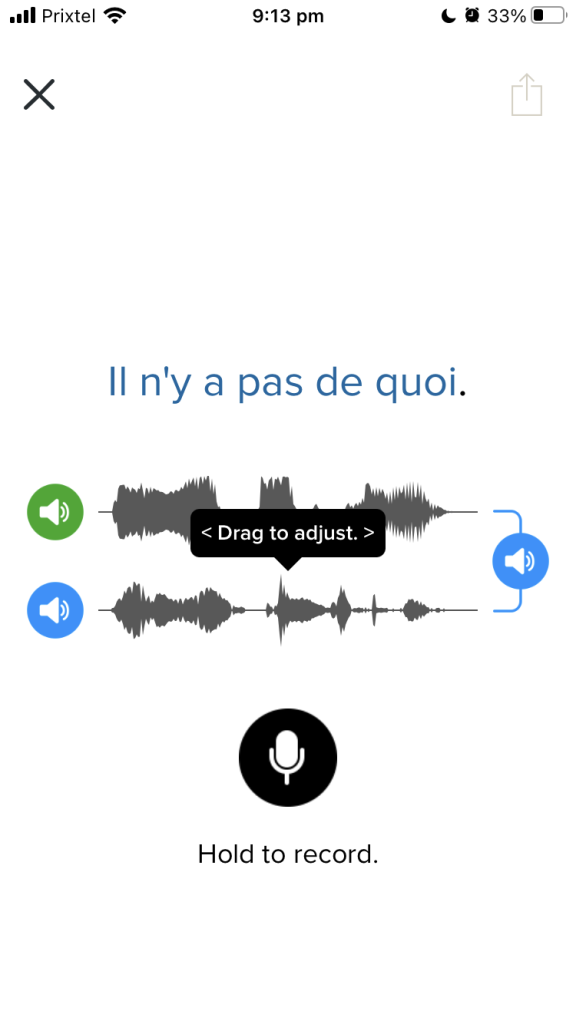
Both Krashen (1982) and Ullman & Lovelett (2018) emphasize how constructive feedback is super important for improving.
When you receive this kind of feedback, it helps you correct those errors and learn from them.
It’s having someone point out where you might be making mistakes or could do better.
It’s a bit like having a map that shows you the right path when you take a wrong turn.
So, don’t be afraid of making mistakes when learning a new language – they’re valuable opportunities for growth, and is one of the many important language learning strategies, especially when you have good feedback to guide you.
B. Setting Realistic Goals
Achieving fluency in a foreign language is no easy feat. It requires dedication, discipline, and most importantly, setting realistic goals.
All three studies emphasize the significance of setting clear language learning goals aligned with personal motivations.
You need to have a clear understanding of what you hope to achieve to keep you motivated throughout the learning process.
B1. Setting Clear Goals and Motivation
Setting clear language learning goals and staying motivated are great language learning strategies. It’s like having a roadmap and the fuel to reach your destination.
When you set specific goals, it’s like deciding where you want to go in your language learning journey.
For instance, saying, “I want to be able to have a conversation in Spanish by the end of the year” gives you a clear target.
This clarity helps you focus your efforts and stay on track.
Now, let’s talk about motivation – it’s the engine that keeps you going.
When you’re motivated, learning becomes more enjoyable, and you’re more likely to put in the effort to achieve your goals.
So, when you have a clear direction (your goals) and the energy (motivation) to get there, your language learning journey becomes smoother and more successful.
B2. Effective Goal Orientation
There are two main types of goal orientations: mastery, and performance. Generally speaking, mastery is a long term goal, and performance is more a short term goal.
Whether you’re driven by a desire to improve (mastery goals) or to achieve specific outcomes (performance goals), your choice of language learning strategies will be influenced by your goal orientation.
Both orientations have an impact on how you approach and engage with the process of learning a new language.
Mastery Goals:
These goals are centered around the idea of self-improvement and learning for the sake of getting better at the language.
People with mastery goals are focused on understanding and mastering the language itself.
They see challenges and mistakes as opportunities to learn and grow.
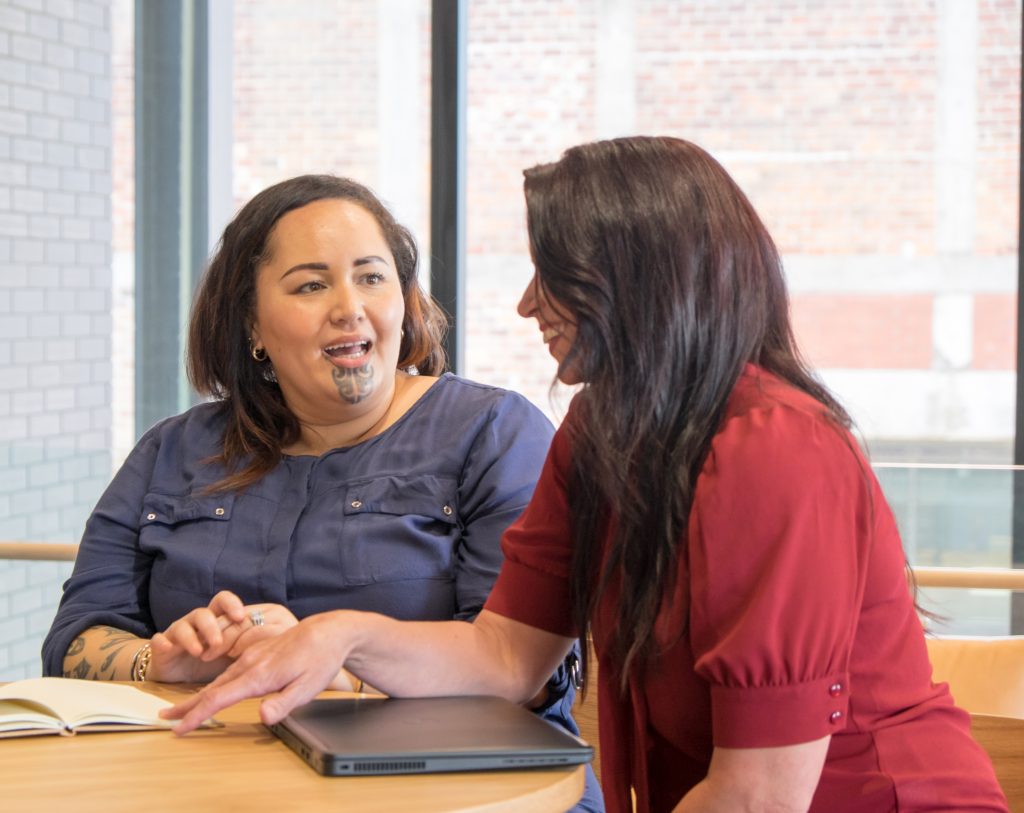
This mindset influences the language learning strategies they use, often favoring methods that help them understand the language deeply.
A mastery goal in language learning could be centered around the desire to deeply understand and excel in the language for personal growth and satisfaction.
An example of such a goal might be: “I aim to become proficient in French so that I can read classic French literature and appreciate the culture. My goal is to understand complex texts and hold meaningful conversations.”
If you are focused on mastery goals, you might use strategies such as extensive reading, language immersion through media consumption, and regular practice to deeply understand and master the language’s nuances.
Performance Goals:
Performance goals, on the other hand, are more outcome-oriented.
Learners with performance goals are primarily concerned with achieving specific results, such as high grades or speaking fluently in a short time.

They may be more focused on the end product than the learning process itself.
Consequently, this goal orientation can lead to different language learning strategies, as learners may prioritize activities that directly contribute to achieving their desired outcomes.
An example of a performance goal could be: “I need to achieve a score of 850 on the TOEFL English proficiency test within three months to gain admission to my desired university program. I will prioritize exam-oriented practice and test-taking strategies to reach this score.”
If you have performance goals, you may choose to use language learning strategies like exam-oriented vocabulary memorization, structured language courses with predefined learning outcomes, and timed speaking practice to achieve specific language proficiency milestones efficiently.
2. Language Learning Strategies
Being strategic is your secret weapon for success in language learning.
Drawing from research insights, let’s explore some essential language learning strategies that can elevate your journey.
These strategies act as your roadmap, guiding you towards proficiency and making the process both efficient and enjoyable.
From comprehensible input to the art of immersion, we’ll unveil how these strategic approaches can turbocharge your language learning adventure.
So, gear up and discover the keys to becoming a more effective and accomplished language learner.
A. Using Comprehensible Input
Comprehensible input means you’re learning best when you understand what you’re hearing or reading; it’s like learning to swim in a pool with water at just the right depth – not too shallow, not too deep.
Krashen suggests that you should aim to understand about 80% of the content you’re exposed to, whether it’s spoken or written.
This means that while there may be some unfamiliar words or phrases, the majority of what you encounter should be comprehensible, allowing you to learn and absorb new language skills effectively without feeling overwhelmed by constant confusion.
It strikes a balance between challenging yourself and ensuring that you’re not completely lost in the material, promoting efficient language acquisition.
Exposing yourself to language that’s just a bit more challenging than what you currently understand steps up your game in language learning.
The exposure to content slightly above your current level helps language acquisition.
Let’s say you’re learning Spanish, and you decide to watch a Spanish movie with English subtitles. The spoken language might be a bit above your current level, but the English subtitles help you follow the story.
Over time, as you watch more movies and listen to Spanish, you’ll start picking up new words and phrases.
This gradual exposure to slightly more complex language helps you grow and improve your language skills because it’s like a small step up the learning ladder.
B. Practice Variability
Practice variation in language learning is all about keeping your learning experiences diverse and engaging.
When you practice a new language, doing the same thing over and over again, like just memorizing vocabulary or repeating the same types of exercises, can become monotonous and less effective over time.
Instead, you should mix things up.
Incorporating variation in learning tasks and contexts is particularly effective as one of the language learning strategies to enhance memory retention.
Try different methods and activities to keep your learning fresh and exciting.
For example, one day, you might focus on reading a short story in the target language, then the next day, engage in a conversation with a native speaker or a language exchange partner.
You could also watch a movie or listen to music in the language, or even play language learning games or use language learning apps.
Switching between different types of language activities keeps learning engaging and memorable.
By practicing in various ways, you expose yourself to different aspects of the language, such as speaking, listening, reading, and writing, which helps you become a well-rounded language learner.
It also prevents boredom and burnout, making your language learning journey more enjoyable and sustainable. So, remember to keep things varied and fun to boost your language learning success!
C. Embracing Immersion
Incorporating the target language into daily life through media, conversations, and activities accelerates your language learning and can be one of the most effective language learning strategies.
Immersion is like taking a deep dive into the world of a new language.
It’s not just about studying the language; it’s about living it.
Imagine you’re in a foreign country where everyone speaks the language you’re trying to learn.
In this environment, you’re constantly exposed to the language in everyday life – from ordering food at a local restaurant to chatting with neighbors.
This kind of immersion is incredibly powerful for language learning because it forces you to use the language in real, practical situations.
You’re not just memorizing vocabulary and grammar rules from a textbook; you’re applying them in conversations, listening to native speakers, and picking up on the nuances of how the language is naturally spoken.
It’s like learning to swim by jumping into a pool – you’re surrounded by the language, and you have to figure out how to stay afloat.
Initially, it might feel challenging and overwhelming, but over time, you become more comfortable and confident.
Your brain adapts to the new linguistic environment, and you start to understand and communicate more effectively.

However, immersion doesn’t always mean traveling to a foreign country.
You can create your own immersion experiences by:
- watching movies or TV shows in the target language,
- reading books or newspapers,
- listening to podcasts or music, and
- engaging in conversations with native speakers or language exchange partners.
The key is to expose yourself to the language as much as possible in various contexts, so you become familiar with its sounds, structures, and cultural nuances.
This kind of immersion accelerates your language learning journey and helps you become a more proficient and confident speaker.
D. Balance Between Implicit and Explicit Learning
Balancing implicit and explicit learning in language learning means finding the right mix between learning naturally through exposure and consciously studying grammar and vocabulary.
It’s like cooking – you need the right ingredients and the right recipe to make a delicious dish.
Balancing implicit and explicit learning in language learning is like finding the sweet spot between two approaches:
Explicit Learning (Conscious Study):
Explicit learning involves consciously studying the language’s rules, grammar, and vocabulary.
It’s like having a recipe that guides you through the cooking process.
You may use textbooks, take language classes, or work with language learning apps to systematically build your knowledge of the language’s structure.
Explicit learning helps you understand the “whys” and “hows” behind the language.
It provides you with a foundation that allows you to express yourself accurately and avoid common mistakes.
However, as a language learning strategy, relying solely on explicit learning can be like trying to make a dish by following a recipe without the right ingredients.
Implicit Learning (Learning Naturally):
This is the immersive side of language learning, where you pick up the language through exposure and practice, much like how children learn their native language.
It’s about listening, speaking, and engaging with the language without necessarily focusing on grammar rules or vocabulary lists.
This part of learning is like the ingredients in cooking – you need them to make a dish taste good.
When you immerse yourself in the language, whether through conversations with native speakers, watching movies or TV shows, or reading books, you absorb the language’s patterns, pronunciation, and cultural nuances naturally.

It’s an essential part of language learning because it helps you develop fluency and an intuitive understanding of how the language works.
The key to successful language learning is finding the right balance between these two approaches.
Just as in cooking, where you need both quality ingredients and a good recipe, in language learning, you need both natural exposure and conscious study.
Too much emphasis on one over the other can lead to limitations.
Striking this balance ensures that you have a solid foundation (explicit learning) while also being able to use the language effectively in real-world situations (implicit learning).
It’s like creating a delicious language proficiency that combines the best of both worlds.
3. Memorisation Strategies
Memorization strategies may not sound exciting, but they’re a super important tool when you’re learning a new language.
Think of them as your trusty companions on your language-learning journey.
These strategies go beyond simply repeating words like a parrot; they involve techniques that help those words stick in your memory.
By employing these strategies, you’re essentially building a solid foundation for your language skills.
You’re constructing a sturdy base for your language learning; once it’s in place, you can build upon it with confidence.
Memorization strageties help you remember essential vocabulary and phrases, ensuring they’re readily accessible when you need them in conversations.
Moreover, they contribute to fluency, allowing you to speak with more ease and confidence.
You gain the ability to glide through a conversation smoothly, without stumbling over words or struggling to recall what you’ve learned.
But it’s not just about practicality; it’s about connection.
Memorization strategies help you truly connect with a new language. They are the keys that unlock doors to new cultures, people, and experiences.
When you can express yourself effectively, you can engage more deeply with others, understand their perspectives, and share your own. It’s like discovering a whole new world through the language you’re learning.
So, when you dive into these memorization strategies, remember that they’re not just about memorizing.
They’re about empowering your language skills, boosting your confidence, and opening up a world of opportunities for connection and understanding.
A. Utilizing Memory Enhancement Techniques
Ullman and Lovelett (2018) talk about a group of language learning strategies called mnemonic devices or mnemonics, that can make learning languages easier for you.
Mnemonic devices create memory hooks. Like hanging your keys on a hook, you learn new concepts by associating them with something memorable, so you don’t forget them.
There are many memory tricks that can make the process of learning a new language easier.
These memory strategies, which are essential language learning strategies, can be thought of as valuable tools in your language-learning toolbox.
A1. Chunking
Chunking is a powerful memory enhancement technique that can work wonders in language learning. It involves breaking down a large amount of information into smaller, manageable “chunks” or groups.
When applied to language learning, chunking can help you memorize and recall new vocabulary and phrases more effectively.
Here’s how it works: Instead of trying to remember individual words or phrases, you group them based on common themes, meanings, or patterns.
This can be a phrase, a sentence, question and response, or semantic webs like vocabulary around a particular topic – whatever works best for you.
For instance, if you’re learning French, you might chunk together words related to food, such as “pain” (bread), “fromage” (cheese), and “vin” (wine). By organizing vocabulary in this way, your brain can process and store them more efficiently.
Instead of memorizing individual words, group them into meaningful clusters, like building blocks, so you remember larger, more useful chunks of language.
Chunking also aids in understanding sentence structures and grammar rules.
When you break down complex sentences into smaller chunks, it becomes easier to decipher their meaning and apply the correct grammar.
This approach not only enhances your memory but also promotes a deeper understanding of the language.
In essence, chunking transforms the sometimes overwhelming task of learning a new language into more manageable segments, making your language learning journey smoother and more effective.
A2. Rhyming
Rhyming is like making a catchy song out of words. Just as song lyrics stick in your head, rhyming words or phrases can make language elements easier to remember.
Cognates (words that are of the same linguistic origin) are often words that rhyme – for example:
father (English) - vader (Dutch) - Vater (German)
My favourite example of using rhyming cognates across languages comes from Richard Simcott, who wrote a story of his language learning journey that transitions between 20 language varieties.
(If you are wondering if Richard can actually communicate relatively fluently in these languages – he can. I know him personally, and have heard him have conversations with people on the street, others at conferences. For this video he is reading a script, so that he doesn’t forget his progressions. But he doesn’t need a script to speak the languages.)
A3. Storytelling
Consider storytelling as weaving a tapestry of words. When you use words to tell a story, it’s like threading them into a vivid narrative, making them memorable through context.
I use this in the early stages of my language learning. I write a short biography, answering the typical questions that a new acquaintance might ask me.
By writing this short, one paragraph story of who I am, I quickly become accustomed with the vocabulary I am likely to use quite frequently as I meet native speakers – words and phrases like ‘mother’, ‘two daughters’, ‘adult’, ‘learn languages’, ‘go cycling’.
I also quickly learn essential verb conjugations for words like ‘to have’, ‘to be’, ‘to do’, and modal verbs if there are such things in my target language.
A4. Acronyms
Acronyms are words or a pattern of letters you make from the initial letters of words. By creating a catchy word using the first letters of a list, it helps you remember the items in that list.
An example of an acronym frequently used when learning French is BAGS:
- B for “Beauty” (beau, joli, laid) – Adjectives related to beauty or aesthetics.
- A for “Age” (vieux, jeune, ancien) – Adjectives indicating the age of the noun.
- G for “Goodness” (bon, mauvais, gentil) – Adjectives describing the moral or qualitative aspect.
- S for “Size” (petit, grand, gros) – Adjectives denoting size or physical characteristics.
When I am constructing sentences in French and can’t remember if the adjective precedes or follows a noun, by remembering this word I can quickly make the grammatically correct phrase.
B. Applying Spaced Repetition
Research, like Hermann Ebbinghaus’s work in the late 19th century, laid the foundation for spaced repetition. More recent studies, such as those conducted by Piotr Wozniak, the creator of the SuperMemo software, have shown that spaced repetition can significantly improve your retention and long-term memory.
One of the language learning strategies both Ullman & Lovelett (2018) and Krashen (1982) recommend is spaced repetition techniques for vocabulary learning. Reviewing material at intervals enhances retention and understanding.
Spaced Repetition involves reviewing and revisiting information at increasing intervals over time.
It relies on the psychological spacing effect, which suggests that you remember things better when you review them at intervals instead of cramming all at once.
Picture it like planting seeds and nurturing them. Instead of cramming, you space out your learning sessions, letting knowledge grow and stick over time, like tending to a garden.

To implement spaced repetition for language learning, you can follow a learning plan based on spaced repetition, or utilize specialized apps or software.
These tools adapt to your learning progress, ensuring that you revisit and reinforce words and phrases at optimal intervals to maximize your language retention.
These memory strategies are like tools in your language-learning toolbox, each designed to help you remember words and phrases effectively, making your journey to mastering a new language more manageable and enjoyable.
C. Imagery
Utilizing mental imagery can enhance memory. Creating vivid mental pictures related to language elements can help learners remember words, phrases, and grammatical structures.
C1. Visual Aids
Visual aids are like painting a picture with words.
Visual aids could be lists in colours, semantic webs of related concepts or themed vocabulary, mind maps, pictures of various vocabulary, or pictures associated with related concepts.
Even the shape of the word when written might work as a visual reminder for some people.
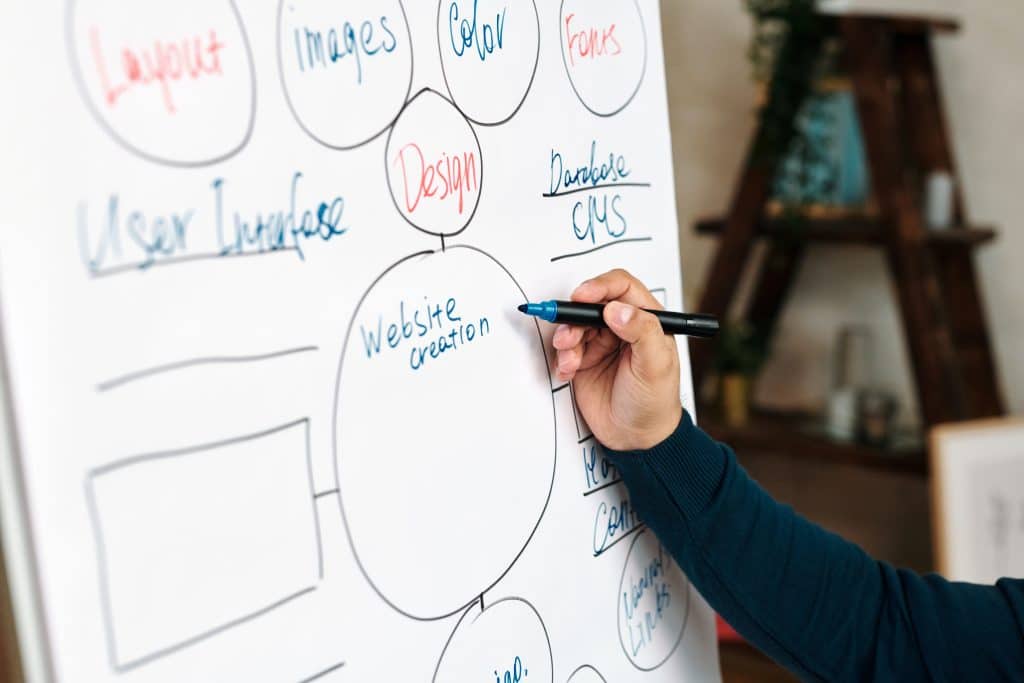
When you create mental images or mind maps for vocabulary, it’s can draw a vibrant picture in your memory, making words easier to recall.
C2. Mind Palace
A mind palace is a specific mnemonic technique using imagery, where you mentally create an imaginary place, like a grand mansion, and use its rooms to store and organize information.
Research, such as a 2012 study published in the journal Neuron by Maguire et al., suggests that the technique can improve memory and cognitive function by leveraging spatial memory and visualization skills.
Think of a mind palace as a filing system for your brain. Just as you organize files in a physical filing cabinet, a mind palace helps you organize information in your mind, making it easier to retrieve.
By mentally placing information in specific locations within your mind palace, you can later recall it with greater ease and accuracy.
Constructing a mind castle is a potent mnemonic strategy specifically useful when learning languages. With this technique, you mentally craft an elaborate imaginary setting, such as a house you know well, and use the memory of its various rooms and features as mental locations to store and organise grammatical information and vocabulary.
For instance, suppose you’re studying a new language and need to remember vocabulary words related to different topics, like food, clothing, and travel.
In your mind castle, you can envision it as a house you used to live in with distinct rooms dedicated to each of these categories.
As you study, you mentally place the foreign words and their meanings into the appropriate rooms, associating them with the context they belong to.
When it’s time to recall these words in conversation or during a test, you mentally traverse your mind castle, entering the relevant rooms and effortlessly retrieving the language you’ve stored there.
This approach transforms abstract language learning into a vivid and memorable mental realm, making it simpler to remember vocabulary and concepts.
The mind castle technique is a valuable tool for enhancing language acquisition by capitalizing on the brain’s innate capacity for spatial and visual memory.
D. Elaborative Encoding
Ullman and Lovelett’s concept of “Elaborative Encoding” suggests that when you’re learning a new language, it’s beneficial to connect the new information with what you already know.
This is a bit like building bridges between your existing knowledge and the new language concepts you’re trying to grasp.
For example, if you’re learning Spanish and you already know English, you can relate Spanish words to their English counterparts.
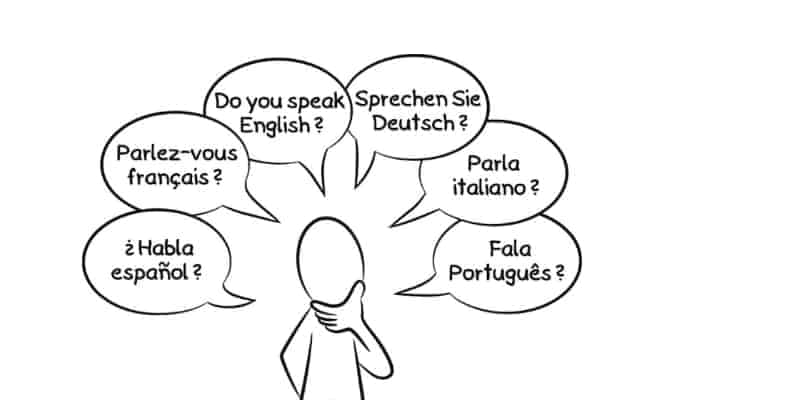
This approach helps you remember and understand the new language more effectively because you’re building on what you already comprehend.
Picture associations as creating mental links between words. Imagine it’s like connecting dots with a line; when you remember one word, it helps you recall others related to it.
Learning Germanic and Romance languages, I often find I can associate a new word with a similar word or concept in English.
The Dutch word for ‘through’ is ‘door‘, so when I learned that word, in my head I said “I walk through the door.”
Likewise, ‘stool’ means ‘chair’, ‘praat’ means to talk, and reminds me of the English slang ‘prattle’, which is to talk incessently.
‘Padre’ in Spanish means ‘father’ … and is a slang word association for the minister of a catholic church, referred to as ‘Father’ in English.
Some people use picture associations to learn, putting images on their flashcards or using apps that teach vocabulary with image associations.
In the context of Ullman and Lovelett’s discussion about the balance between implicit (unconscious) and explicit (conscious) learning, elaborative encoding leans more towards explicit learning. It’s a conscious effort to connect the dots between what you know and what you’re learning. By combining both implicit and explicit learning methods, as they suggest, you create a more robust and holistic approach to language acquisition.
4. Conclusion
To learn languages fast can be a daunting task, but it doesn’t have to be. With the types of language learning strategies we have discussed here, anyone can become fluent in a foreign language.
By setting realistic goals, choosing a language that interests you, and following the tips and tricks outlined in this guide, you can make your language learning journey faster and more effective.
Remember that language learning is a lifelong process, and the key to success is consistency and perseverance. So, keep practicing, stay motivated, and enjoy the journey of discovering new cultures and ways of communicating.
References
Lee, M., & Bong, M. (2019). Relevance of goal theories to language learning research. System, 86, 102122.
Krashen, S. (1982). Principles and practice in second language acquisition. Pergamon Press.
Ullman, M. T., & Lovelett, J. T. (2018). Implications of the declarative/procedural model for improving second language learning: The role of memory enhancement techniques. Second language research, 34(1), 39-65. https://doi.org/10.1177/0267658316675195.
Cate is a language enthusiast sharing her language learning journey here. Apart from her native English (albeit 'Strine'*!), as an adult she has also learned Auslan (Australian Sign Language) to approximately a C1 level, Dutch to around B1/2, French to around A2, and has a smattering of other languages.
B.A. (Anthropology/Marketing), Grad. Dip. Arts (Linguistics), Grad. Cert. Entrepreneurship & Venture Development, (CELTA).
Auslan Interpreter (NAATI), and general Language Nut.
*For more information on 'Strine', visit https://en.wikipedia.org/wiki/Strine

